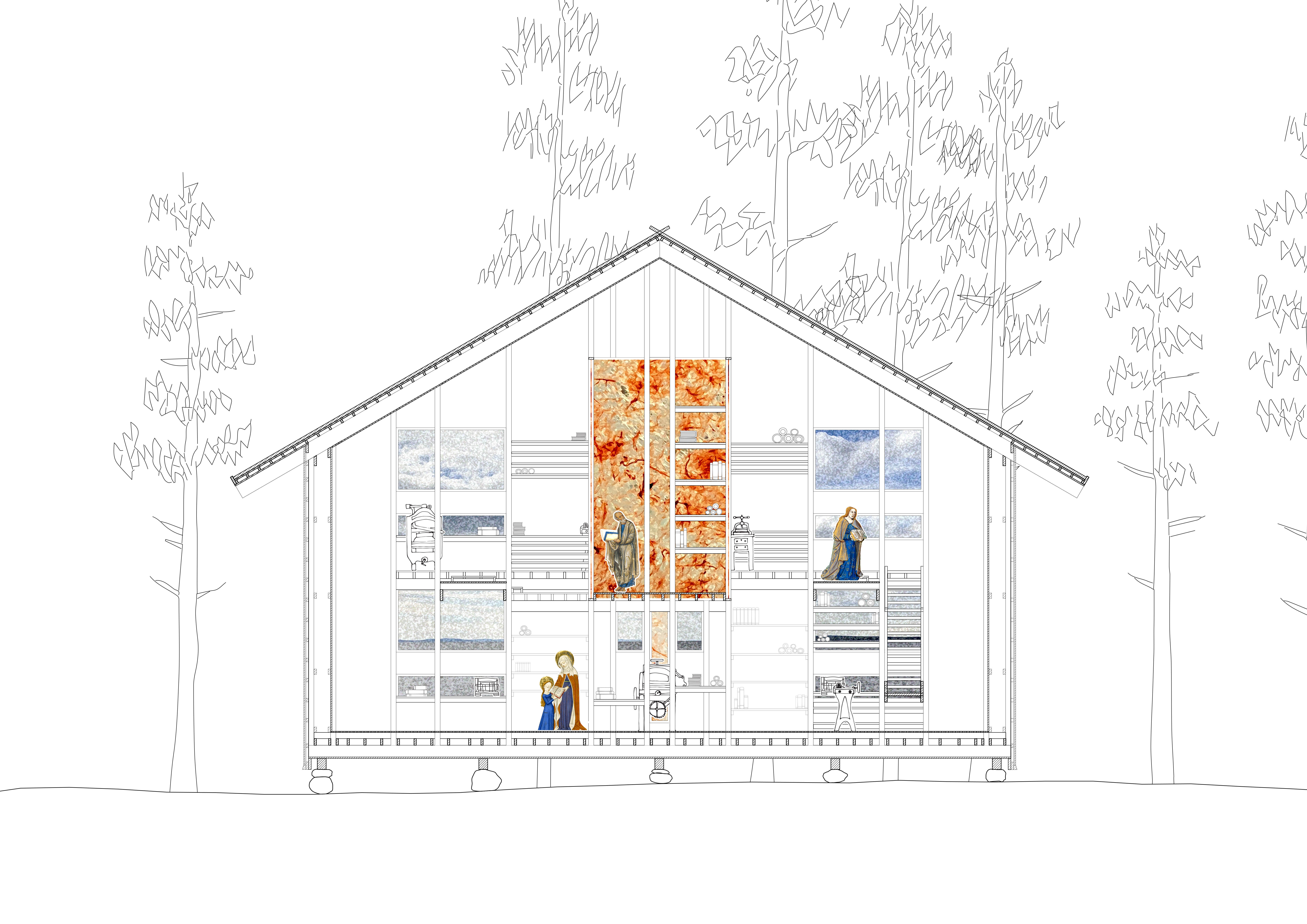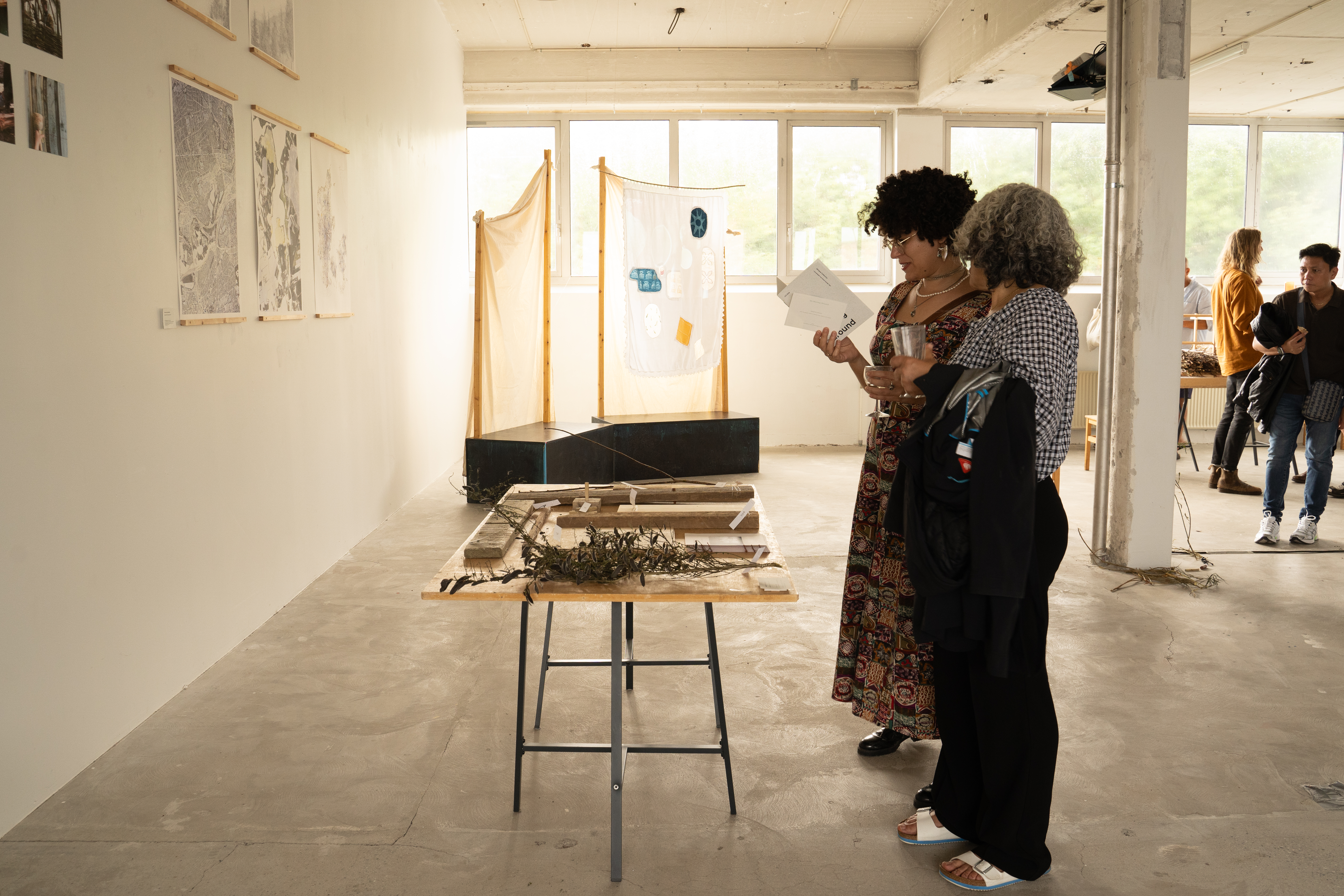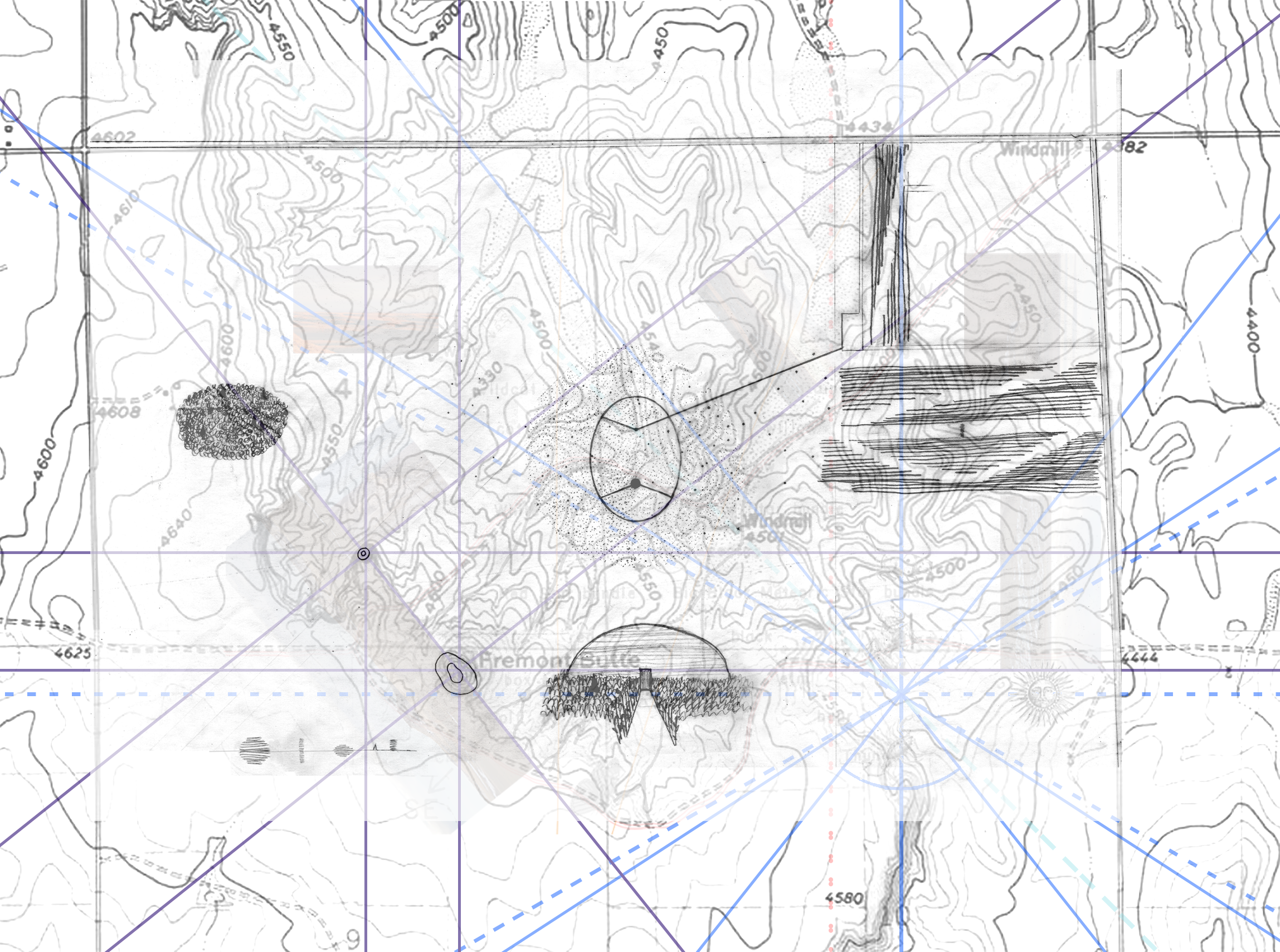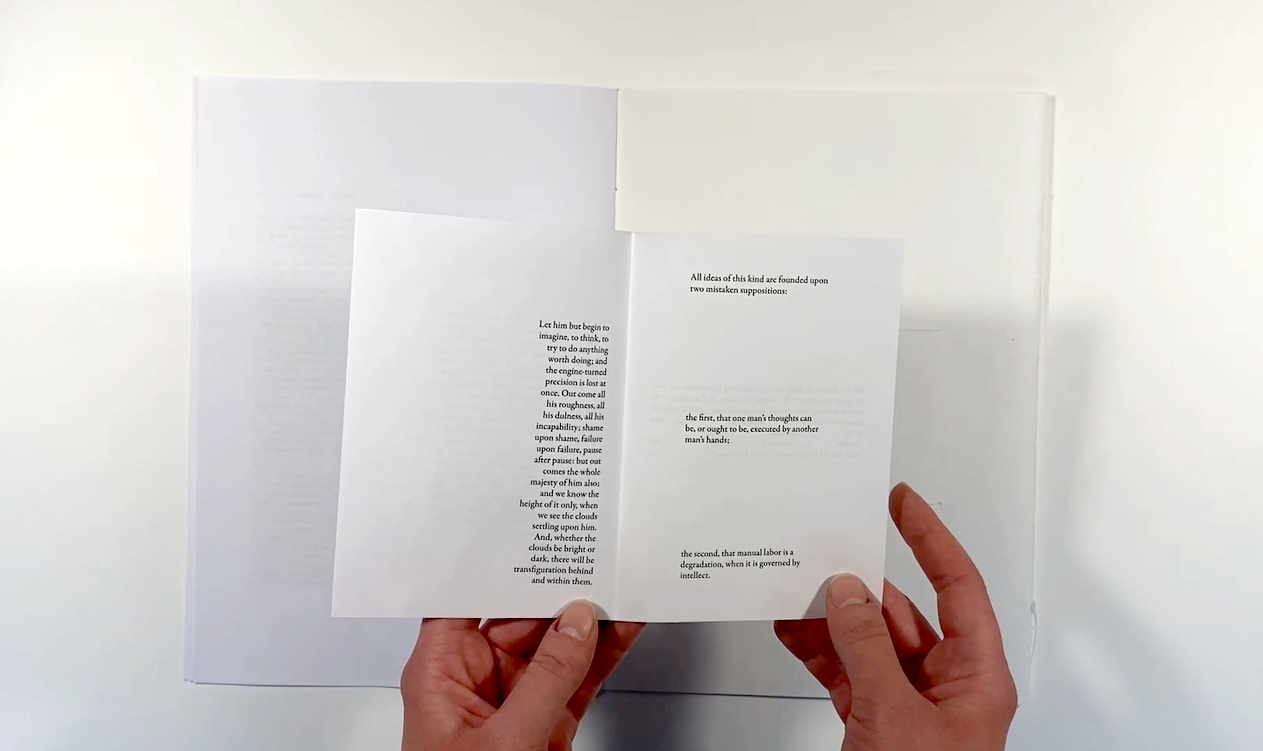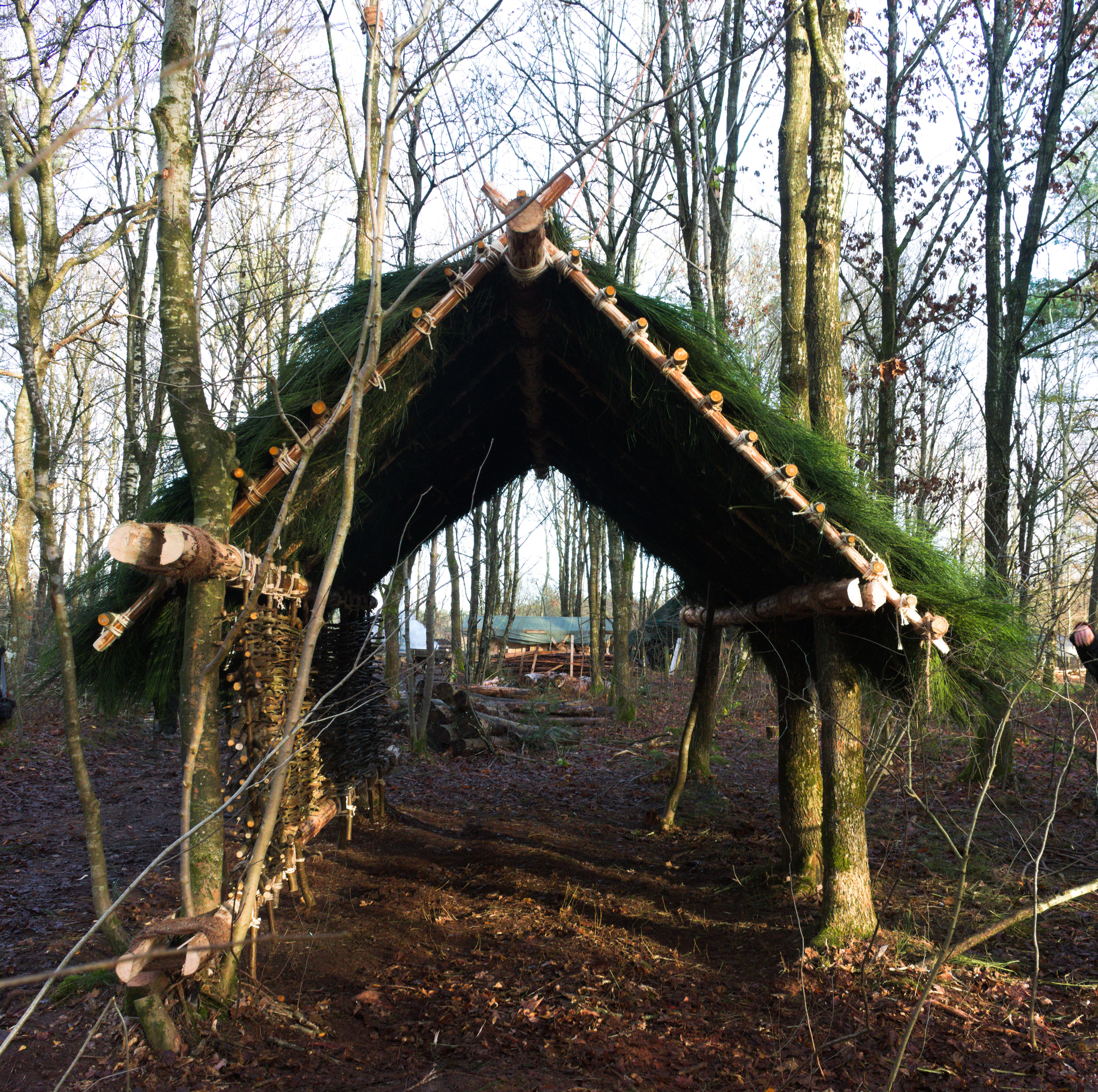
Rooted: A Situational Shelter
Cattle Shelter
Hjerl Hede, Denmark
Fall Semester, First Year Master’s
Fall Semester, First Year Master’s
A cattle shelter at the open air museum Hjerl Hede was an opportunity to explore building entirely with materials sourced on-site. The “radical vernacular” project examined questions of local, traditional architecture in a globalized, modern setting, implementing invasive species such as black cherry and scotch broom combined with intuitive
building methods.


By employing the trees on the site as living columns the roof is able to float amongst the forest canopy, carried by a ridge beam that follows the movement of the trees as they sway in the wind. The use of natural materials ensures that the building may deteriorate and return to the forest, establishing an ephemeral quality in discourse with the temporality of the forest.
Rather than joining the elements of the project with hardware, lashing is employed as a solution that will deteriorate over time with the rest of the materials. This also serves as an exploration of constructive techniques which are not as common in modern architecture. The beams and rafters are red spruce that were felled on site and debarked before being split by hand to preserve the uncut fibers for longevity and strength. Black cherry weaves into a wind screen on one side of the shelter, and lashes to the rafters to serve as battens in the roof. The scotch broom intertwines between these battens, sheltering the cattle from rain and snow.
Rather than joining the elements of the project with hardware, lashing is employed as a solution that will deteriorate over time with the rest of the materials. This also serves as an exploration of constructive techniques which are not as common in modern architecture. The beams and rafters are red spruce that were felled on site and debarked before being split by hand to preserve the uncut fibers for longevity and strength. Black cherry weaves into a wind screen on one side of the shelter, and lashes to the rafters to serve as battens in the roof. The scotch broom intertwines between these battens, sheltering the cattle from rain and snow.


